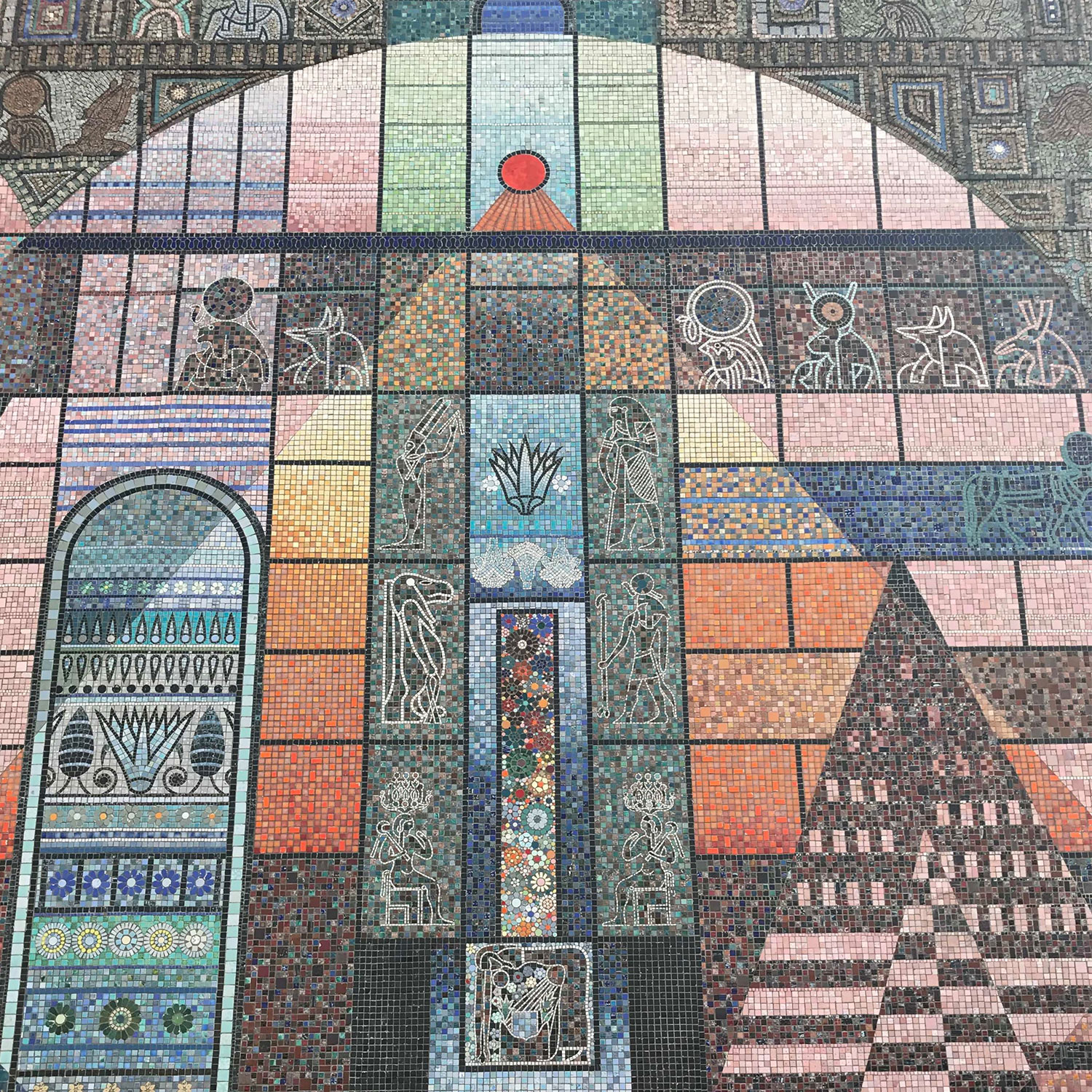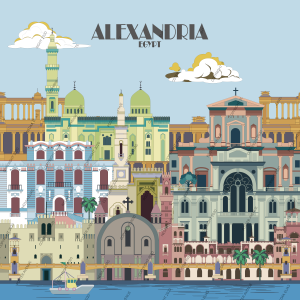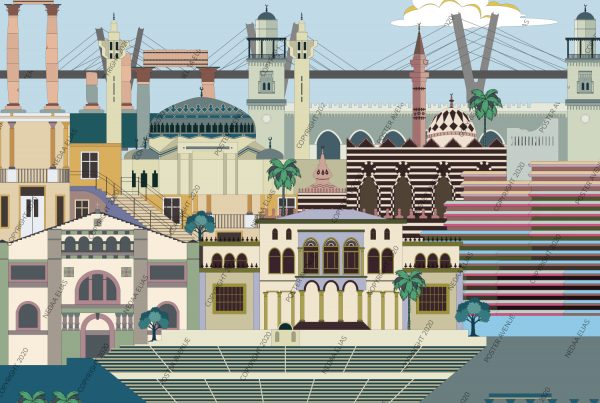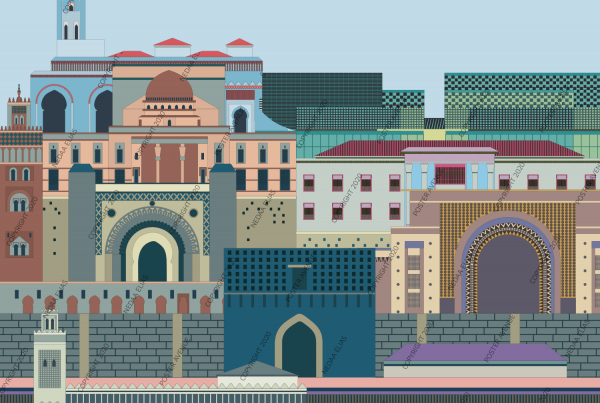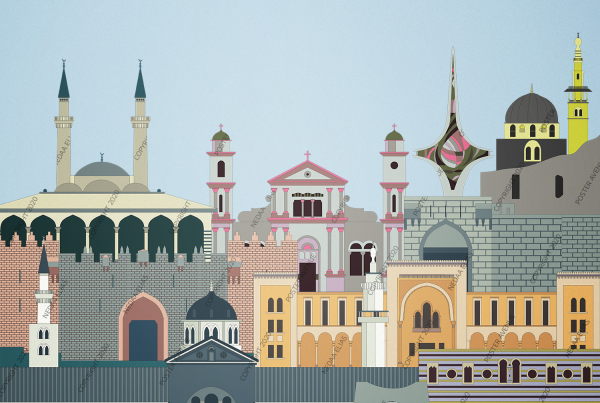The pearl of the Mediterranean Sea, Alexandria, was constructed around 331 BC by Alexander the Great. Since its foundation, the city has been influenced by several and diverse beautiful prints of Greek, Roman, British and Italian, visible within its architecture and planning. The maritime gate of the city was defined by the famous Alexandrian lighthouse, which guided ships into the harbor. It was one of the wonders of the world, before its destruction in the 14th century by an earthquake. Another landmark of the city is the Bibliotheca Alexandrina, constructed during the Ptolemaic reign, it housed a series of manuscripts and books. After several demolitions and re-constructions, due to fires and earthquakes, the current Bibliotheca is an established revolutionary attraction of the city, not only for scientists and scholars but also for tourists and the general public. Comprising museums, art galleries, exhibitions, a planetarium, and a restoration laboratory, the current structure is registered under the UNESCO world heritage list.
The city is known by several anchor points. Like all maritime cities, Alexandria has a defensive fortress on its coast. The Citadel of Qaitbay was built by Sultan Abu Al-Nasr Sayf ad-Din Al-Ashraf Qaitbay, a Mamluk governor, to protect the city against the Ottoman Empire. Erected on the same location of the destructed lighthouse, the citadel is an illustration of the mamluk fortification system with its massive watchtowers and square-shaped stone structure.
Another famous Islamic landmark of the city is Sidi Abo El Abbas El Morsi Mosque. First built as a small mausoleum to commemorate one of the Andalusian scholars and saints. It then became a place for pilgrimage for Muslims from Egypt and Morocco. Later a larger mosque was built over the mausoleum, by well-known Italian architect Mario Rossi. The current structure represents the imported architecture and skilled works from Italy to Alexandria. The fusion of designs respects local traditions. The compound architecture vocabulary of the mosque includes: an octagonal plan, with an octagonal skylight, arabesque decorated ceiling, colored arabesque glass, cream-colored structure, and Ayyubid minarets. Similarly, the Italian architect designed two more mosques that define the city’s harbor skyline, Al Qaaed Ibrahim Basha Mosque and Muhammad Kurayim Mosque. Al Qaaed Ibrahim Mosque was built in the 19th century to commemorate Ibrahim Pasha, the son of Mohamed Ali who formed modern Egypt.
The scarce Islamic symbols in the city, which are also built by foreign architects, indicate that Alexandria is a highly cosmopolitan European metropolis. An evidence of this is the neo-baroque style displayed in Saint Catherine Cathedral and the Tomb of the Unknown Soldier. Designed by the Franciscan architect Serafino da Baceno, the Cathedral features a rich façade design, with twisting elements, statuaries, central open pediment and small segmental pediments, with an exquisite contrast between light and shadow. Likewise, the Unknown Soldier monument was built by Italian residents of the city, it features a roman colonnade curved to embrace the coast. It honors the unknown soldiers who died in the sea.

Another Italian-built landmark is the all-white Alexandria National Museum. Surrounded by a lush garden of trees and flowering plants, the former Italian mansion features classic decorative elements, a symmetrical and almost squared-façade, tall segmented windows, and an elegant semi-circular double staircase topped with marble balustrades. The structure adds to the rich architectural heritage of the city with a Palladian Neo-Renaissance style.
Moving on to the Coptic style, the Cathedral of St. Mark is a true representation of the Coptic Orthodox Church. Built and pulled down several times through history, the current structure has a gigantic curved entrance, built with reinforced concrete, and ornamented with 6 marble pillars and beautiful Coptic engravings. The building is flanked by two bell towers featuring conical roofs.
Another monument marking the once upon a time diversity of Alexandrians is the Eliahu Hanavi Synagogue. A memory of a once-flourishing Jewish community, the Italian-built structure was recently renovated after several years of neglect. Defined with a series of pilasters, the façade features arched windows with ocular, and fine curved decorative elements.

The Italian-style architecture didn’t stop developing in this rich ground. An elaborated Italian Renaissance style emerged, mixing Ottoman and Florentine architecture. The illustration of this unique style is presented in the Montaza Palace and Stanley Bridge. Both structures are characterized by a red and white color scheme, high towers topped with a square pitched roof, a series of open arcades, fine stone detailing, and a luxurious sense of grandeur. Complementing the summer royal residence in Al-Montaza, Stanley Bridge was the first bridge in Egypt to be constructed over the sea.
Alexandria has been influenced by diverse art and architecture movements, it was a workshop for architects and engineers to practice, develop, and adapt different styles. A mixture between the local and the global, the immortal city is indeed a great inspiration for practitioners and it has been influential for other cities.



